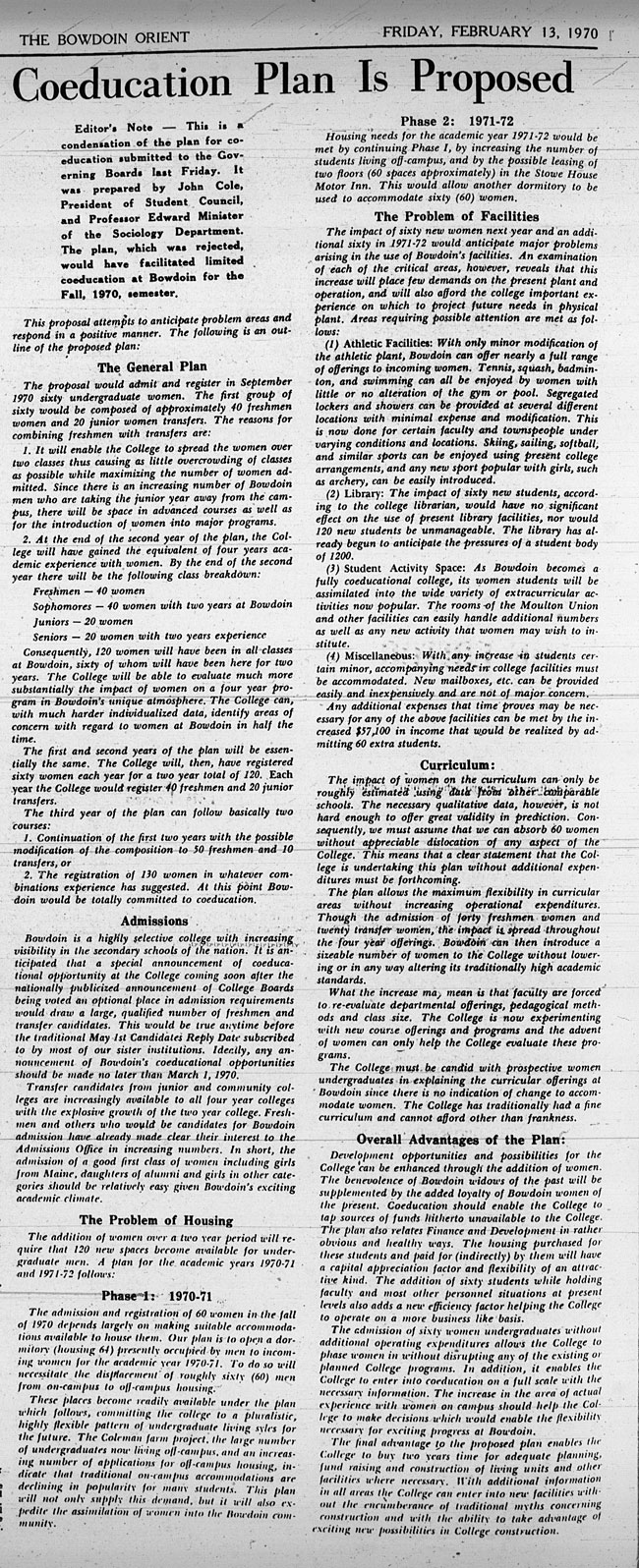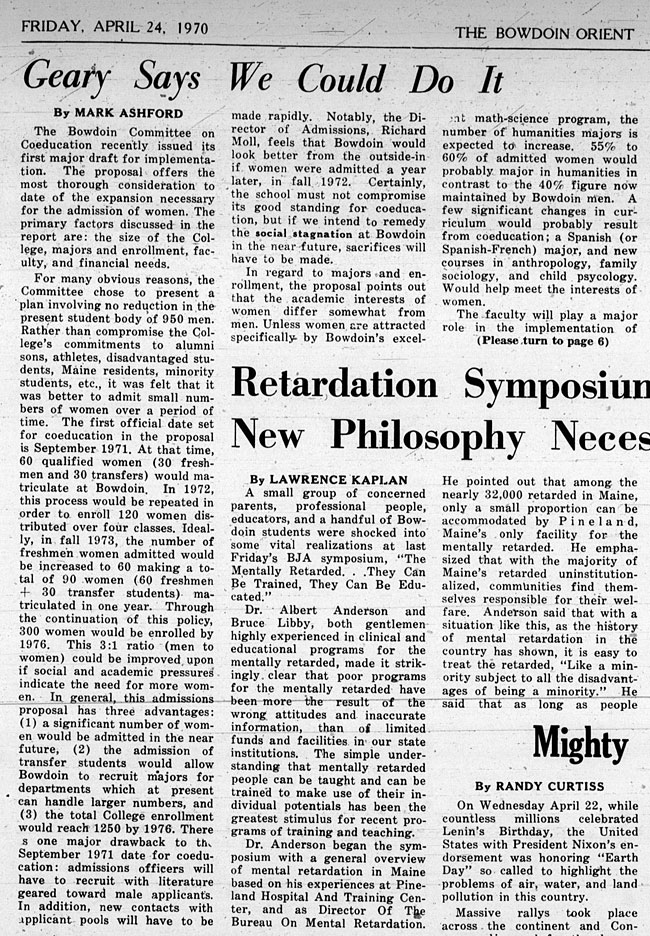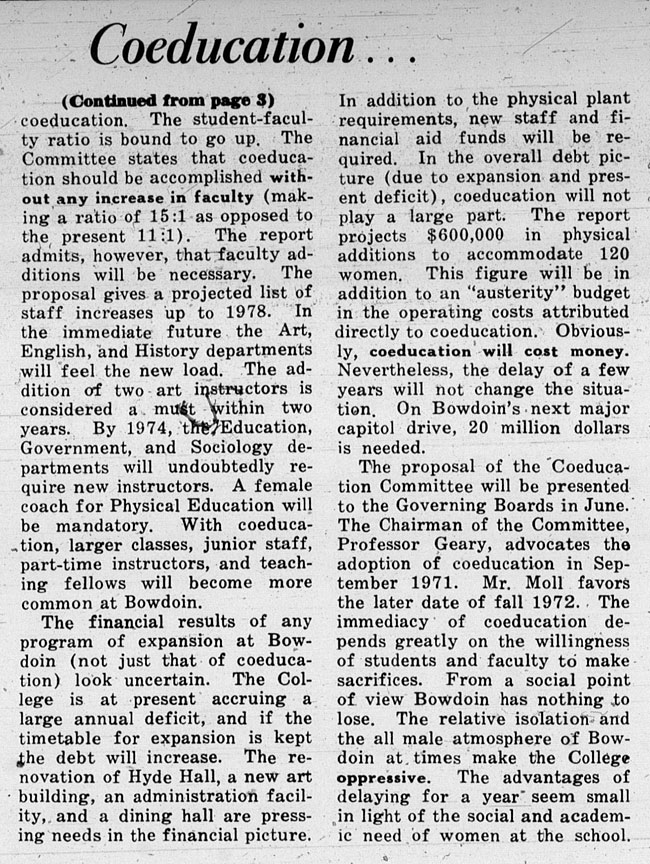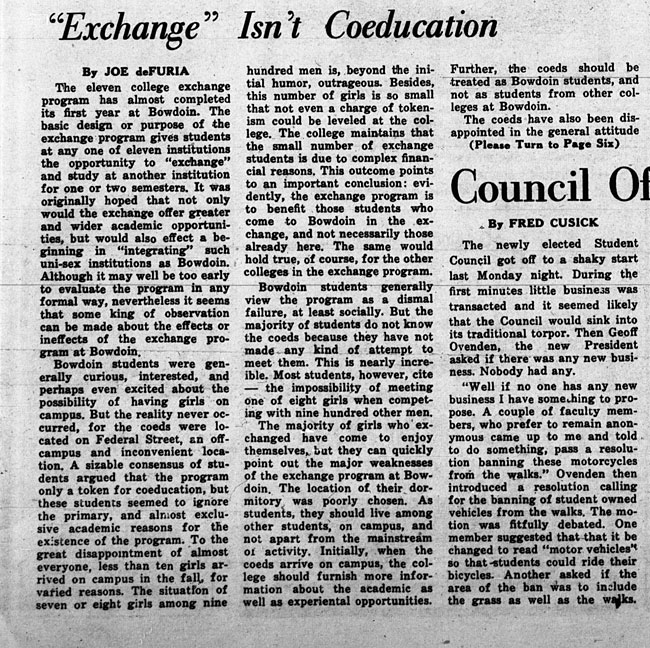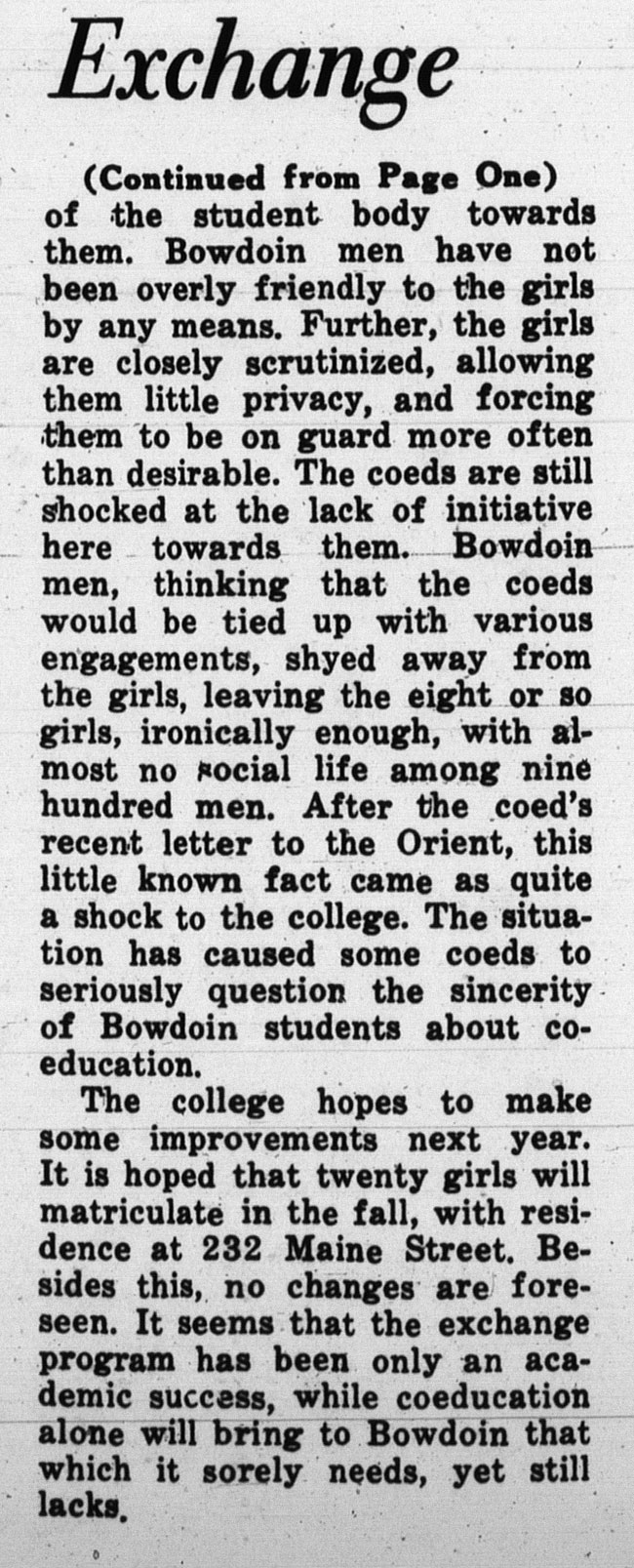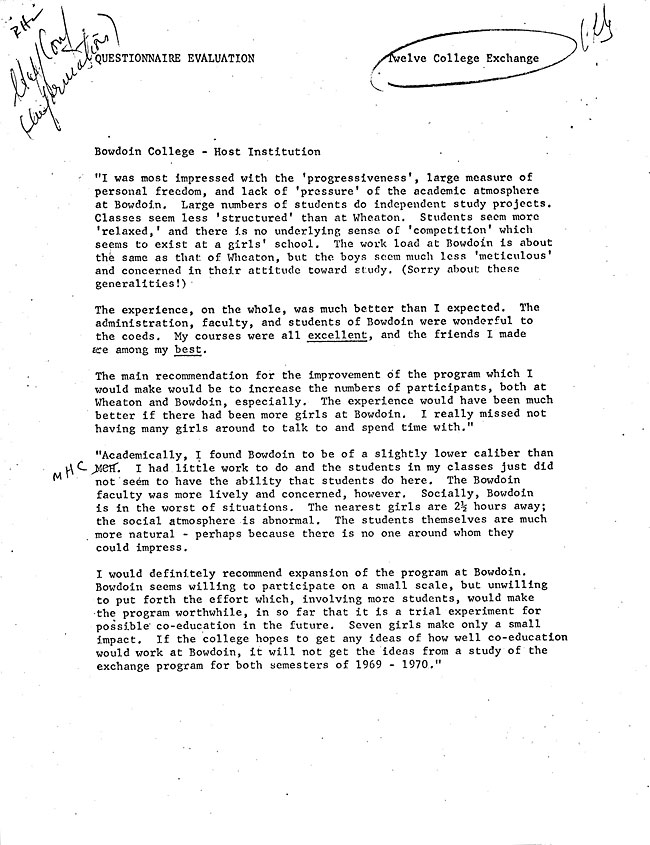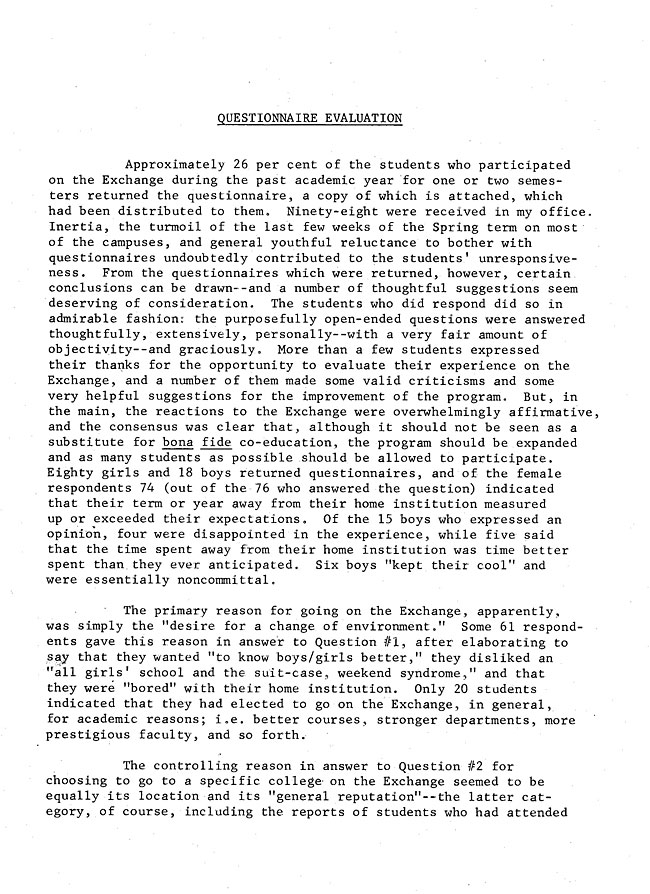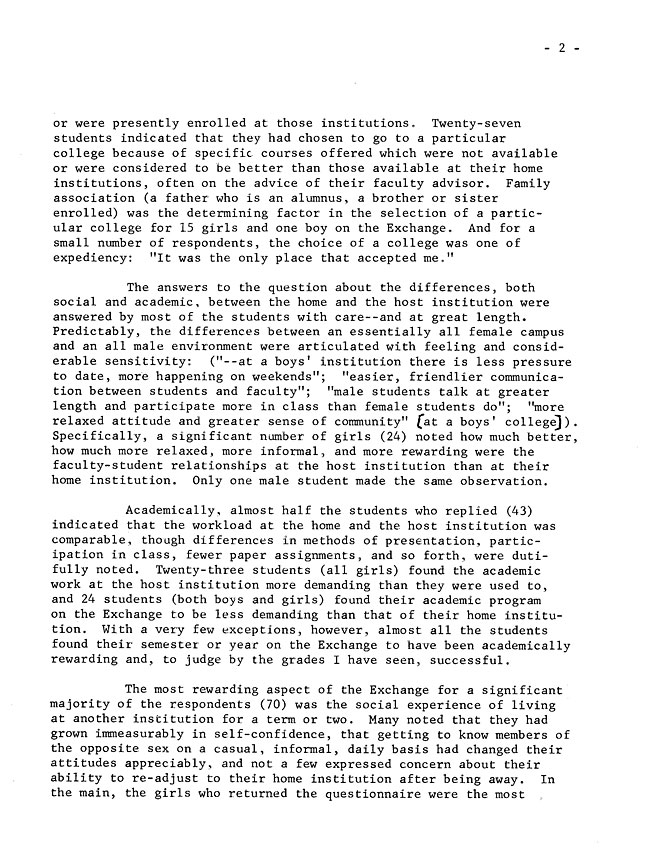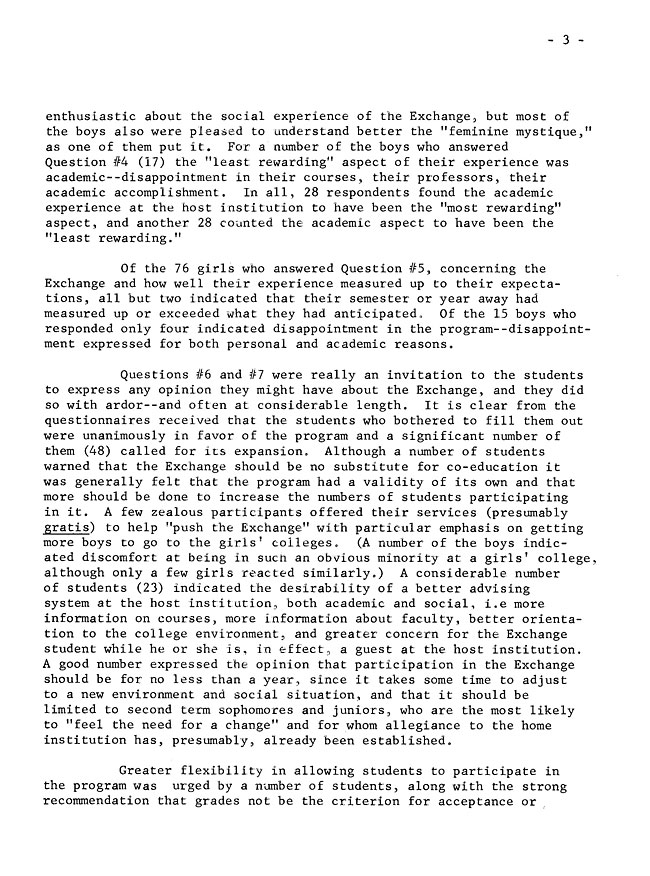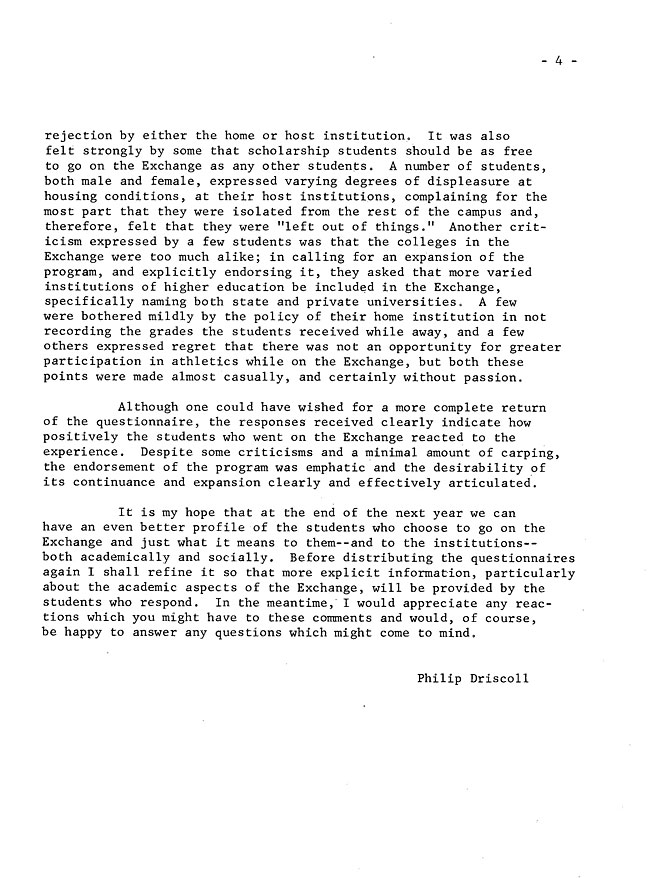This editorial, Pierce and Progress, from the October 3, 1969 issue of the student newspaper The Orient responds to the release of a Bowdoin student life report known as the Pierce Report. The writers of the Pierce Report recommended changes to the campus that included both coeducation and the continued presence of fraternities. While the authors of Pierce and Progress were completely dismissive of the Pierce Report’s evaluation of fraternities, they were supportive of coeducation but questioned what they considered prejudice in the report.
Pierce and Progress argues that the committee who wrote the Pierce Report did not represent all sides of the coeducation discussion fairly. They wonder if the committee was purposefully “ignorant about women” in order to prove Bowdoin’s need for coeducation (Document SB, 11). The Pierce Report, they argue, uses common female generalizations to present ways in which women would improve the campus. Interestingly, Pierce and Progress notes that “women often drop their fields after marriage,” which is a negative generalization the committee did not consider.
Pierce and Progress stresses the importance of continued discussion between Bowdoin students and staff about coeducation. At the time of the editorial, there was, they argue, “still a strong demand for all men schools.” Many of the male students who applied to Bowdoin while it was an all male school expected it to remain single-sex. After the admission of women, those were the men that were openly unwelcoming to their new classmates. Although the authors of this editorial seem to favor coeducation, the degree of criticism they launch against the Pierce report gives pause.
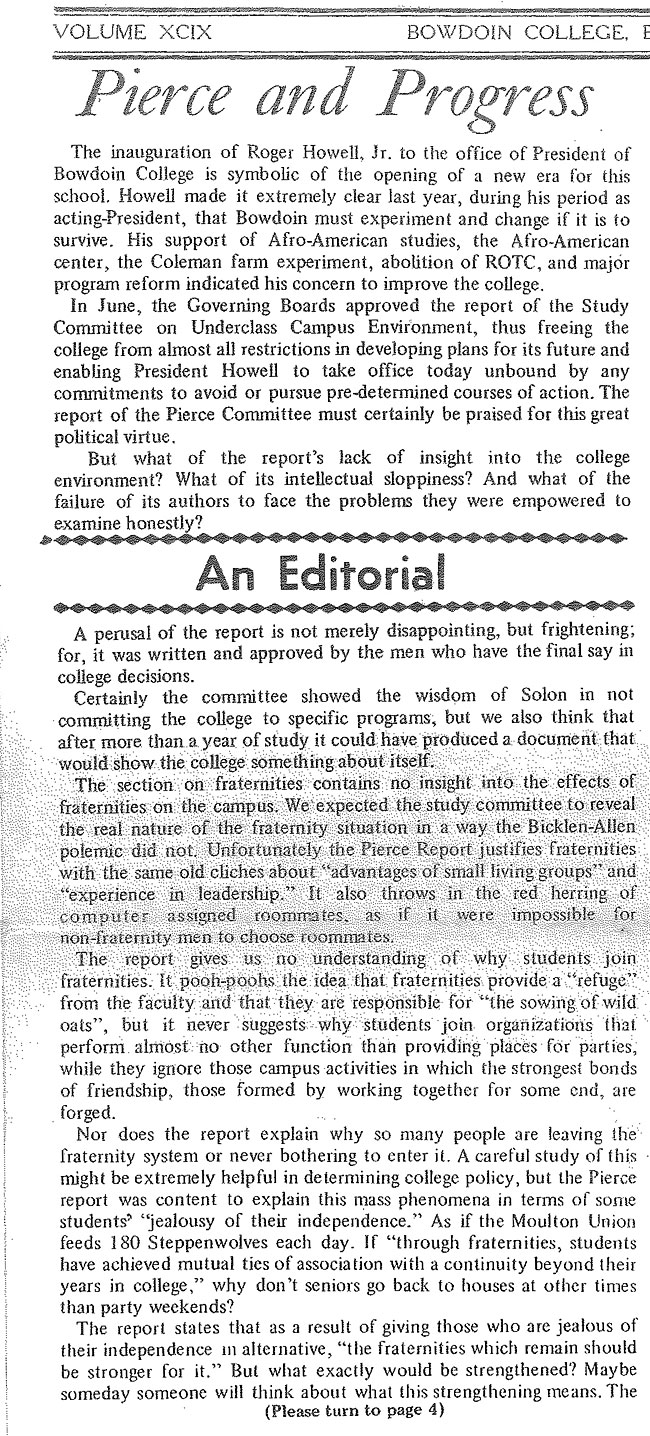
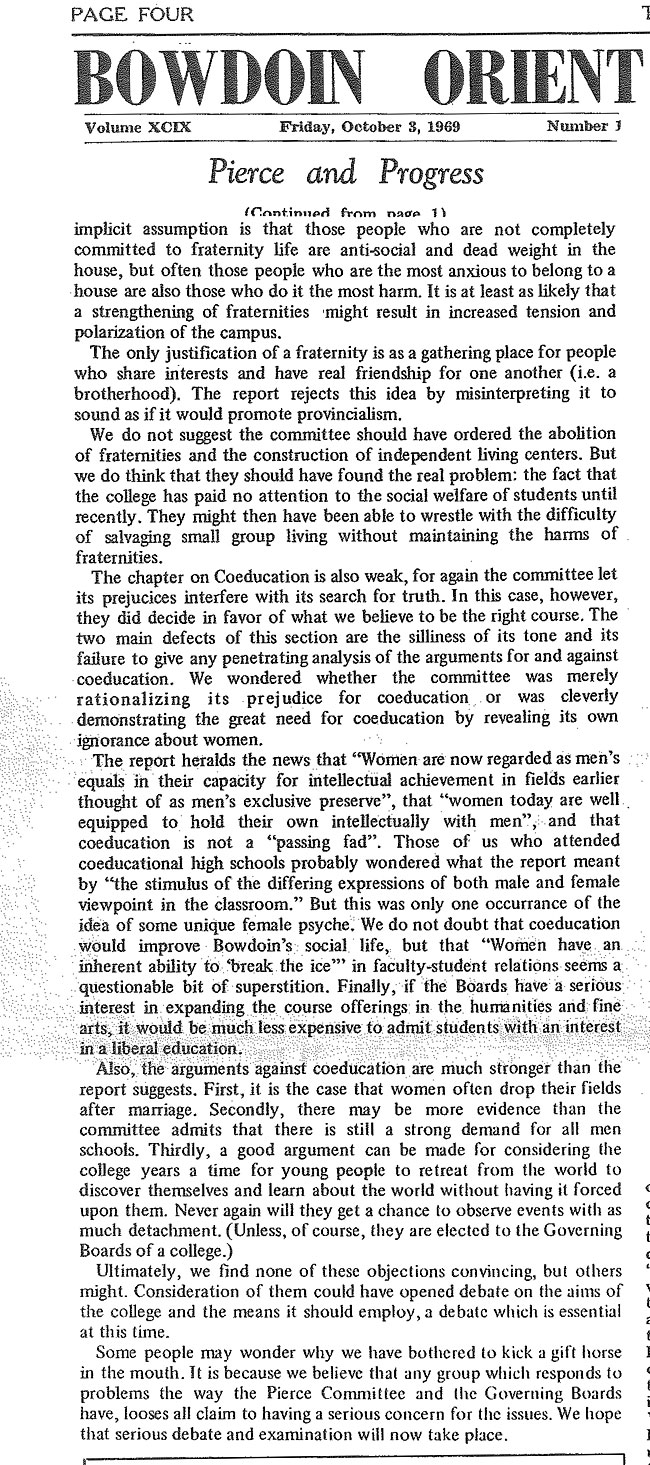
SB 11
